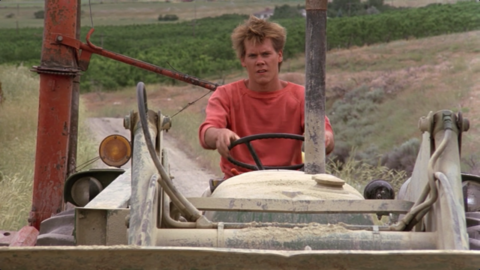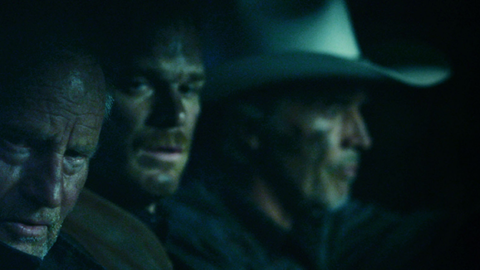Deep Focus: Cop Car
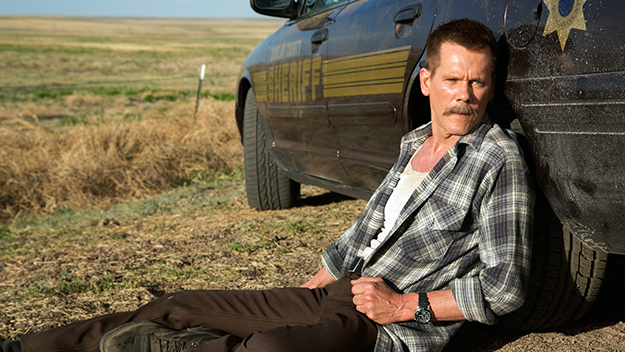
Hollywood apocrypha has it that W.C. Fields wrote the idea for Never Give a Sucker an Even Break on the back of a grocery bill. Director Jon Watts should float the myth that he and Christopher D. Ford wrote the entire screenplay for Cop Car on the back of the kids’ menu at IHOP. If ever there was a high concept made for a low budget, it’s this one: two runaway boys take off in a sheriff’s cruiser, then learn that the sheriff is one mean hombre—luckily, played by a great and generous performer, Kevin Bacon.
Watts makes sure that all of Cop Car’s moving parts support this one-trick pony of a chase movie. The boys are naïve 10-year-olds: in the first scene, one must teach the other how to curse. So the audience chalks up their misbehavior to innocent high spirits and cringes as they toy with firearms left in the back seat. The setting is rural Colorado; the handsome or home-worn locations hold nostalgia value for Watts, who grew up there. For the audience, the choice accentuates the simplicity of the action. When the pre-pubescent buddies drive the unattended car out of the fields where the sheriff thought he’d hidden it, they don’t navigate through too much traffic on the highway. Only one other driver (Camryn Manheim) intersects with the single clean line of suspense, to humorous and then saddening effect.
Watts realizes that after No Country for Old Men and Breaking Bad, he needn’t break a sweat to explain why Sheriff Kretzer (Bacon) disposes of a corpse in a cistern and leaves another body (Shea Whigham) still breathing in his trunk. A single shot of Kretzer flushing white powder down a toilet is enough to make audiences think: “Drug deal gone bad.” The 34-year-old director has steeped himself in the movies of the Seventies as seen on VHS in the Eighties, especially the early works of Steven Spielberg from Duel through Close Encounters of the Third Kind. He conjures suspense from putting the clueless or the innocent in jeopardy and building excitement via bouncing wheels and headlights and a raspy police radio. His expertise is admirable.
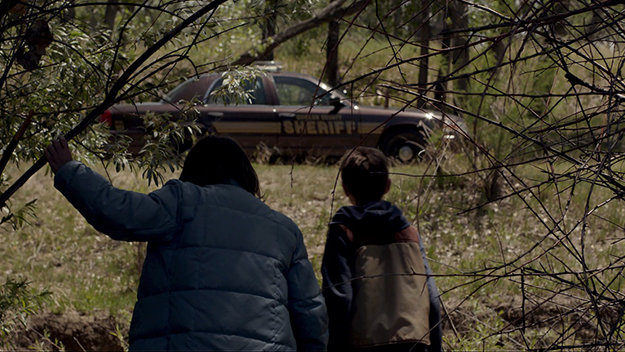
It’s also exhausting, because he doesn’t strike the right balance between emotional vitality and precocious virtuosity. The movie runs 86 minutes; it would not hold your interest for a second longer. Watts has made the kind of Sundance Film Festival entry that might as well be stamped “calling card.” Of course, as a calling card, it has worked tremendously well: Sony selected him to direct the reboot of The Amazing Spider-Man.
After Gareth Edwards (Monsters) putting Godzilla through his paces and Colin Trevorrow (Safety Not Guaranteed) doing the same for the dinosaurs in Jurassic World, picking Watts to remold an icon as beloved and lucrative as Spidey has been taken as yet another sign that the independent world has become the breeding ground for blockbusting moviemakers. The difference is that Watts has several discernible talents.
To begin with, he’s got a bloodhound’s nose for casting and the sense of comic novelty you’d expect from a director who worked for Onion News Network. It remains to be seen whether Watts can actually direct actors, largely because the two real leads—the boys—are so disappointing and lackluster. But they do look and sound like opposite-attracting pals. James Freedson-Jackson, as the spark plug, Travis, has an aggressive tilt to his rectangular head, an overall live-wire physicality, and an attention-getting bark, while Hays Wellford, as his accomplice, Harrison, is sympathetically soft in appearance, voice, and emotions. Watts doesn’t vary or modulate their performances, but he comes up with enough authentic bits of dialogue and action to keep the audience committed to their plight.
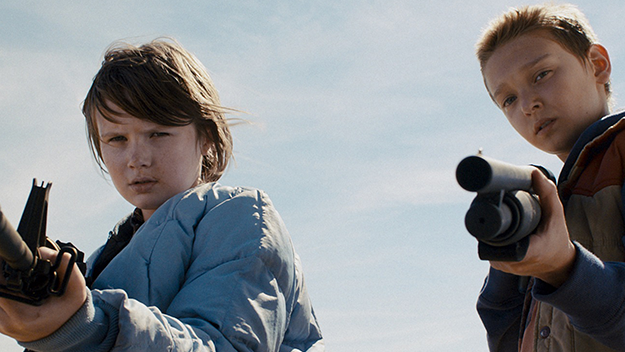
You know Harrison’s reluctance to drive fast is being set up for some future payoff, but it is satisfying to see him ultimately put the pedal to the metal. What rings true are moments like Travis persuading Harrison that it’s permissible to say “fuck” because it’s really from a foreign language. Though he appears to be angelic, Harrison is no better than Travis at reading whether an action or a person is good or evil. Both kids are strangers in the strange new adult land of evil and less-evil.
When Watts has resourceful and imaginative performers, he knows just how to showcase them. Manheim is redoubtably amusing as a woman who can’t believe she sees two 10-year-olds bearing down on her in a cop car. In the film’s drollest touch, she can’t get anyone else to share her rage or wonderment, including a hilariously bored waiter in a restaurant. Watts sweetly embellishes her emotional insulation by encasing her in an aural cocoon of easy-listening country songs.
Bacon is both sardonically funny and a force of nature in this film. He transforms himself physically through an act of imagination, not via some feat of training or doctor-monitored weight change. He’s as lean as ever, but he carries a heavier aura of threat. Stripped down to an undershirt, he runs like “the ill wind that blows nobody good,” at least until he’s winded. Then he starts up again, just as energetically. This stop-and-go rhythm makes him all the more unpredictable and menacing, especially when committing oddball acts like cracking a flowerpot to spook a couple of dogs. Bacon imbues the line, “What we’re looking at is a felony offense,” with the same sadistic delight that Strother Martin gave his famous words in Cool Hand Luke: “What we got here is failure to communicate.” Bacon’s formidable powers of concentration electrify self-contained scenes such as the sheriff trying to unlatch a car door with a knotted shoelace. When he surreptitiously uses his sheriff’s powers to throw other cops off the scent, the actor is so sneakily intense that you do root for him to save his villainous hide. With droopy moustache and furrowed brow, it’s as if Bacon is pulling off an inspired riff on middle-period Nick Nolte (cf. Extreme Prejudice).
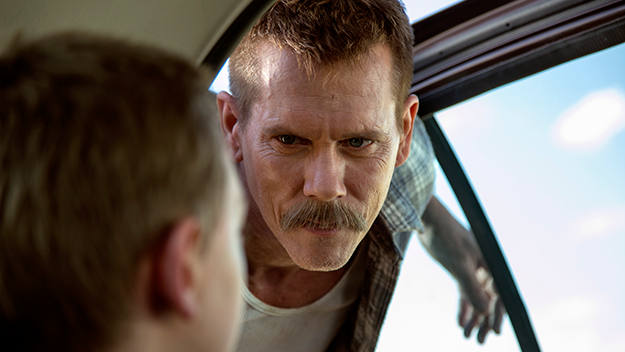
And finally—to save the best for last—Watts displays glimmers of audiovisual poetry. The shots of the boys roaming out of their small Colorado town have a restorative limpidity and spaciousness. The sight of an outcrop starkly rising from the flat fields in front of them makes your own reflexes quicken. The boys’ first sighting of the cop car, on the far side of a small ravine, has a black-magical abruptness. It’s as if the vehicle has been summoned from their own dreams and nightmares. The action darkens as the plot spirals into twilight.
Cop Car premiered at Sundance as a midnight movie, but it’s the kind of film that plays best in the open air in early evening, with a breeze nipping at your ears. It’s an ideal drive-in movie.



